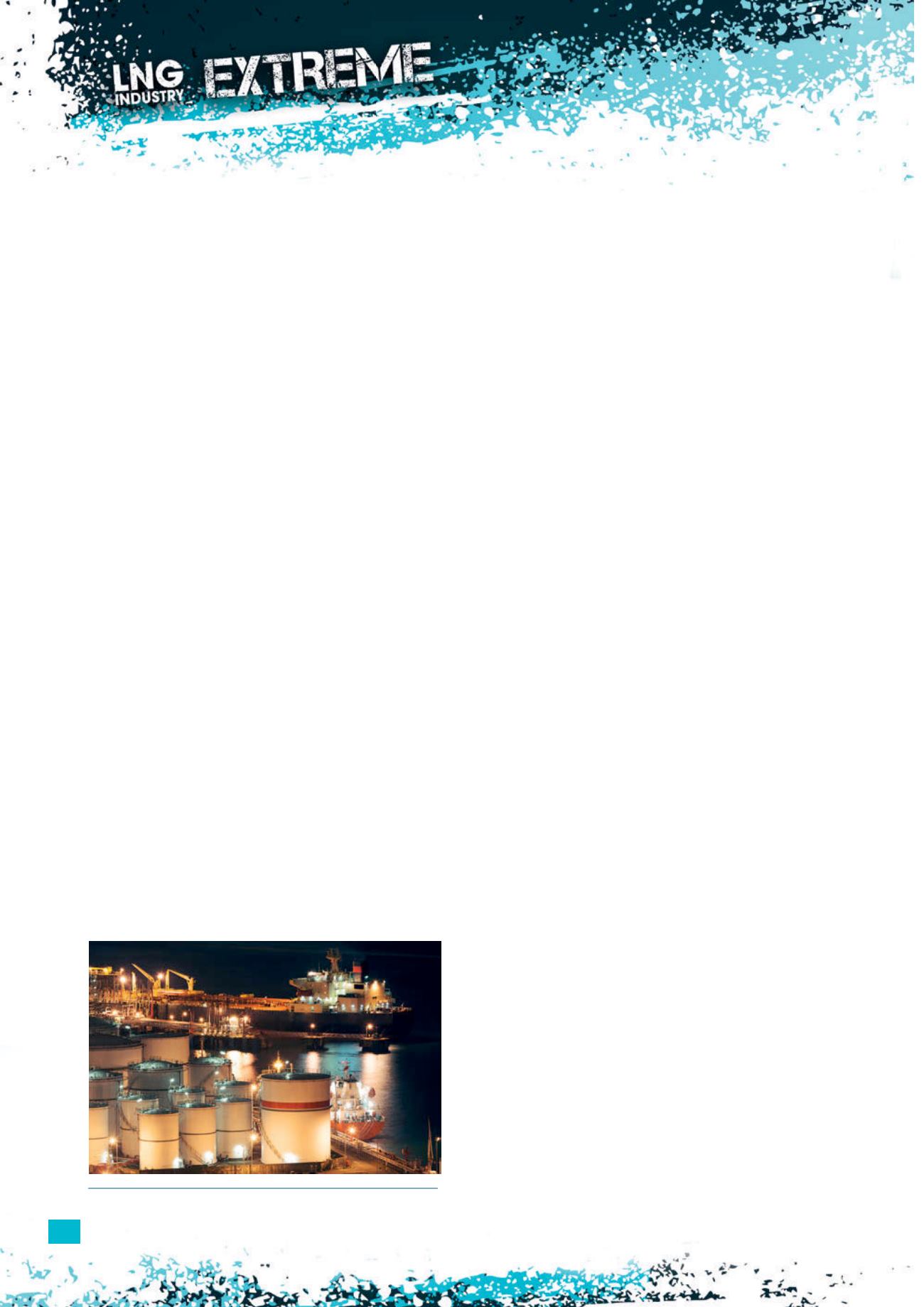
42
Advanced technology for hazardous
applications
Technological capabilities of rupture discs have improved
dramatically in recent years, with the last decade seeing
significant R&D into rupture discs for hazardous applications
and industries. Rupture discs are used throughout the LNG
production process, relieving dangerous build-up of pressure,
as well as protecting pipework and tank containers from
explosion. Exotic materials, such as nickel and titanium, are
recommended for use in LNG environments so that a longer
operational life is maintained, radically reducing the levels of
decomposition.
Common factors when storing LNG
LNG is stored at low temperatures to minimise the amount
of evaporation. If LNG vapours are not released, then the
pressure and temperature within the tank will continue to rise.
As temperature levels are consistently fluctuating between
cryogenic storage temperature and the changing ambient
temperature, internal pressure needs to be released on an
ongoing basis in order to protect the tank from any underlying
damage. Temperature fluctuation is a common factor when it
comes to carrying and storing LNG, having a dramatic effect
on pressure capabilities and process conditions. Commonly,
rupture discs are necessary safety devices for this type of
critical application in aid of preventing pressure build-up, while
reducing fugitive emissions.
Rupture discs are commonly used in combination with
burst detection systems within demanding conditions. Unlike
traditional membrane style burst detectors, modern
detectors operate on simple reed switch and magnet
technology. Exd-approved detection systems, for example,
are uniquely designed to offer a practical solution for rupture
disc detection needs in extreme environments, such as LNG.
When the disc bursts, the rupture disc (with its magnet) arcs
away from the sensor, giving an open circuit signal. After
rupturing, the disc is the only element that needs replacing.
Furthermore, Exd detection systems, which combine
advanced rupture disc technology with an Exd junction box,
are compatible in ATEX zones 0, 1 and 2.
As health and safety standards have become more
stringent, the need for burst detection systems to be used in
combination with rupture discs is increasing in demand. When
transferring LNG, considerable care has to be taken in order to
avoid excessive amounts of vapour from being formed. A
careful step has to be taken to cool down the transfer lines in
order to prevent this from happening. This can have an impact
on the pressure and, as a consequence, the rupture disc.
Hence, the demand for burst detection systems is increasing,
as they provide a fail-safe notification of rupture disc burst in
extreme and hazardous environments.
Traditional rupture disc detection systems were designed
to comply with intrinsic safety requirements through energy
limiting methods, developed to meet the needs of the
chemical and pharmaceutical sectors. This makes them reliable
but lacking in robustness, which causes a number of serious
concerns when using them in harsh, demanding environments
and in remote locations. Also, using traditional rupture disc
detection in systems with power management problems
would have an added concern when used in explosive gaseous
atmospheres. There are a limited number of robust and
intrinsically safe detection systems available on the market and
upgrading them to explosion proof standards could be costly.
However, upgrading to Exd detection can significantly reduce
installation costs and long-termmaintenance costs.
Furthermore, due to extreme operating conditions, Exd
detection systems are now increasingly in demand to identify
when a rupture disc functions within arduous operating
conditions. The recent technological advances in rupture discs
and associated detection systems have gained the trust of
users in safety-critical hazardous processes worldwide, making
them a popular pressure relief option to protect against
explosions or spillages. Exd detection systems have been
uniquely designed to identify rupture disc burst in safety-critical
LNG operations, such as liquefaction trains and marine tankers,
which require critical pressure relief protection. The use of a
bursting disc can prevent a vessel from exploding in the event
that an LNG storage tank overheats due to onboard fires or
other incidents.
Industry-best safety methods
Ingress Protection (IP) ratings are safety measure requirements
for Exd-approved detection systems, specifically used to
classify the degree of protection against both solids and liquids
in electrical enclosures. They are used to define levels of
sealing effectiveness of electrical enclosures against intrusion
from foreign bodies (tools, dirt, etc.) and moisture. As quality
standards are becoming increasingly important, IP ratings are
an essential protection method to ensure that a detection
system can be used in extremely hazardous conditions. In LNG
applications, an IP 65-67 rating is recommended in order to
offer adequate protection against contamination. Advanced
Exd detection systems are available with a superior IP 67 rating
for use in extremely harsh and/or remote locations, such as
the Australian outback, where traditional rupture disc detection
systems will have limited life with the risk of failing due to
adverse environmental conditions.
Figure 2.
Exd-approved burst detection is critical in extreme
LNG environments.


